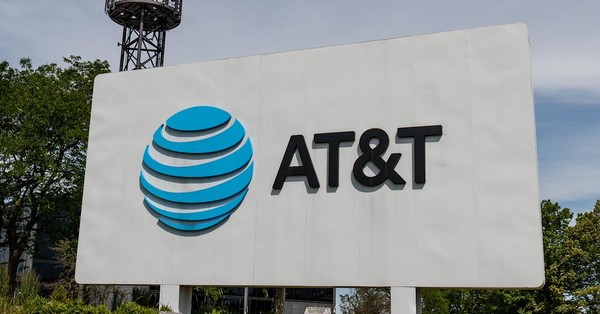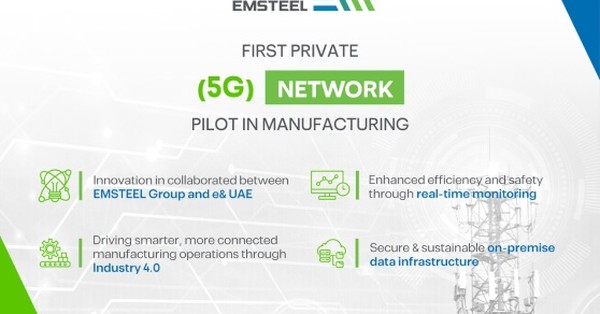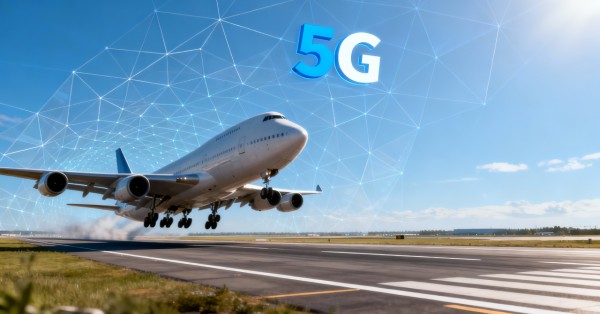Overview of the remote-controlled ultrasound scan over public 5G network
British Telecom (BT) , University Hospitals Birmingham NHS Foundation Trust (UHB) , Medical Devices Testing and Evaluation Centre (MD-TEC), WM5G and jointly demostrated remote-controlled ultrasound scan over public 5G network.
The demonstration simulates a paramedic in the field performing an ultrasound scan on a patient, under the remote guidance of a clinician who is able to interpret the ultrasound image in real-time. The ultrasound sensor is manipulated locally by the paramedic under the remote direction of the clinician. This is done using a joystick operated remotely by the clinician which sends control signals over the live 5G network to a robotic or ‘haptic’ glove worn by the paramedic. The glove creates small vibrations that direct the paramedic’s hand to where the clinician wants the ultrasound sensor to be moved. This allows the clinician to remotely control the sensor position, whilst seeing the ultrasound images in real-time.
In addition, there is a camera in the ambulance which transmits in high definition a view of the inside of the ambulance covering the patient and paramedic to a second screen located on the clinician’s workstation. The images are relayed over a high-bandwidth 5G connection, so the clinician is able to view both the ultrasound examination performed by the paramedic and keep an eye on the overall scene inside the ambulance. The superfast speeds of 5G ensure sharper and more reliable imagery for the clinician than could previously be achieved.
Ultrasonography is the second most common diagnostic test reported by the NHS, with more than 9.5 million carried out last year in England alone. On average, 408,000 patients attend University Hospitals Birmingham Emergency Departments each year, with 113,500 of these patients using an ambulance.
With BT’s EE mobile arm recently switching parts of Birmingham on to the UK’s first 5G services, the company is working with WM5G to illustrate how the technology can deliver significant benefits to the NHS and the wellbeing of citizens across the West Midlands region.
Communication service provider for 5G connectivity
British Telecom (BT) provided mobile connectivity for this use case, to showcase remote-controlled ultrasound scan over public 5G network.
About – BT’s purpose is to use the power of communications to make a better world. It is one of the world’s leading providers of communications services and solutions, serving customers in 180 countries. Its principal activities include the provision of networked IT services globally; local, national and international telecommunications services to its customers for use at home, at work and on the move; broadband, TV and internet products and services; and converged fixed-mobile products and services. BT consists of four customer-facing units: Consumer, Enterprise, Global and Openreach.
Gerry McQuade, CEO of BT’s Enterprise unit, said: “We’re really excited to be working with WM5G and University Hospitals Birmingham on the first 5G healthcare trial to take place in the UK over a live public network. BT has a long and proud heritage of working with the NHS to better connect patients and healthcare professionals and the characteristics of 5G will deliver a huge-step change in speed, capacity and reliability. We are focused on delivering new, innovative services which will make lives better and firmly believe in using the power of 5G to bring potentially life-saving benefits to patients. There’s no better place to start realising this vision than in Birmingham, part of the UK’s first multi-city 5G test bed.”
Solution partners showcasing remote-controlled ultrasound scan
UHB and MD-TEC
This use case was hosted at the Medical Devices Testing and Evaluation Centre (MD-TEC) in University Hospitals Birmingham NHS Foundation Trust (UHB) simulation lab located in the Institute of Translational Medicine.
About UHB – It is one of the largest teaching hospital trusts in England, serving a regional, national and international population. It includes Birmingham Heartlands Hospital, the Queen Elizabeth Hospital Birmingham, Solihull Hospital and Community Services, Good Hope Hospital in Sutton Coldfield and Birmingham Chest Clinic. They also run a number of smaller satellite units, allowing people to be treated as close to home as possible. They see and treat more than 2.2 million people every year across our sites and our hospitals deliver more babies than anywhere else in Europe.
They are a regional centre for cancer, trauma, renal dialysis, burns and plastics, HIV and AIDS, as well as respiratory conditions like cystic fibrosis. They also have expertise in premature baby care, bone marrow transplants and thoracic surgery and have the largest solid organ transplantation programme in Europe. They provide a series of highly specialist cardiac, liver and neurosurgery services to patients from across the UK.
They are world-renowned for our trauma care and have developed pioneering surgical techniques in the management of ballistic and blast injuries, including bespoke surgical solutions for previously unseen injuries. As a result of its clinical expertise in treating trauma patients and military casualties, the QEHB has been designated both a Level 1 Trauma Centre and host of the UK’s only £20m National Institute for Health Research (NIHR) Surgical Reconstruction and Microbiology Research Centre (SRMRC).
About MD-TEC – MD-TEC (Medical Technologies Testing and Evaluation Centre) is a facility based within the Institute of Translational Medicine, in Birmingham, designed to support medical technologies and life science businesses across the region.
Combining unrivalled facilities with academic and industry expertise, MD-TEC will help to remove the regulatory blockages encountered by small to medium sized enterprises (SMEs) and support the accelerated translation of novel medical innovations, in the laboratory, through to the clinic and commercial exploitation. The provision of their facilities, expertise and resources will help to boost the Life Science community in the Greater Birmingham and Solihull Local Enterprise Partnership (GBSLEP), by helping SMEs to bring products to market quickly, at less cost, and with reduced risk.
MD-TEC has received £3.5M of funding from the England European Regional Development Fund as part of the European Structural and Investment Funds Growth Programme 2014-2020. Established by the European Union, the European Regional Development Fund helps local areas stimulate their economic development by investing in projects which will support innovation, businesses, create jobs and local community regenerations.
Tim Jones, Chief Innovation Officer at UHB, said: “We are immensely excited about the potential of 5G to support transformation in healthcare. As a Global Digital Exemplar, we are always looking into new technologies and how we can use them to improve patient care. 5G will help us to roll out this next generation of healthcare technologies. Our clinicians will in the future be able to deliver holistic specialist advice in real time, potentially forming virtual multi-disciplinary teams to provide the best patient care using intelligent IT links. Information would be accessible at the point of need, ensuring informed decision making leading to improved patient safety, quality of care and patient/clinician experience.”
WM5G
About – WM5G Ltd is a new organisation, set up by the West Midlands Combined Authority (WMCA) and the Department for Digital, Culture, Media & Sport to deliver the strategy and further the aims of the WM5G Programme. WM5G is the UK’s first region-wide 5G test bed, designed to achieve citizen, public and private sector benefits from 5G and accelerate 5G deployment across the region. WM5G is part of the DCMS 5G Testbeds and Trials Programme, ensuring the UK can take early advantage of applications, maximise productivity and efficiency benefits to the UK from 5G, create new opportunities for UK businesses and encourage inward investment.
Andy Street, the Mayor of the West Midlands and chair of the WMCA, said: “As the nation’s 5G testbed, the West Midlands is leading the way in showing what this exciting technology can do and how it can be rolled out to the rest of the UK. “We have seen today how 5G has the potential to save patients’ lives, but its new power and technology can also help grow our cutting edge industries that will create the jobs of tomorrow. “5G will be the backbone of our future economy and society, with local people here in the West Midlands reaping the benefits first.”
West Midlands Ambulance Service Strategic Operations Director, Craig Cooke, said: “The 5G network will allow us to further enhance clinical care in the mobile environment, building on the electronic patient record system (EPR) we have already implemented. In simple terms, 5G has the potential to help us provide better care, at the patient’s side, and provide increasingly diverse treatment plans for patients.
“For example, it could allow us to explore live clinical face-to-face consultation with patients at the scene, before the ambulance has arrived. Equally, crews could access specialist assessments and consultations while with the patient through video conferencing or even using new technologies under the remote guidance of consultants or other clinical specialists removing the need for patients to go to hospital. “
As an NHS Global Digital Exemplar, WMAS is already looking at how to extend the use of EPR and explore ways to improve interoperability with our partners such as UHB. One potential development could be the increase of data handover with acute providers to support better patient care. Early access to WMAS information from our vehicles can support the care the patients receive on arrival at hospital and the patient’s journey through departments. We already see this in cases such as heart attacks where hospital staff can view the patient’s ECG, but this could become a live data stream.
RELATED: How 5G is transforming healthcare industry?
Use case showcase location and timeline
This use case was showcased in June 2019 at Medical Devices Testing and Evaluation Centre (MD-TEC) in UHB’s (University Hospitals Birmingham), prestigious simulation lab located in the institute of translational medicine in Birmingham, UK.
Benefits of remote-controlled ultrasound scan over public 5G network
Enabling ultrasound scans to be performed by paramedics in the field and reviewed remotely by an expert clinician will bring a number of advantages to patients and to the NHS, such as:
- Speed up up diagnoses for patients
- Improve overall experience for the patients
- Reduce the number of ambulance journeys and emergency department visits
- Free up ambulance resources and
- Reduce pressure on emergency departments
Faster diagnoses can also assist in triaging patients, ensuring more effective outcomes for the patient, and increasing overall efficiency for the hospital.









































